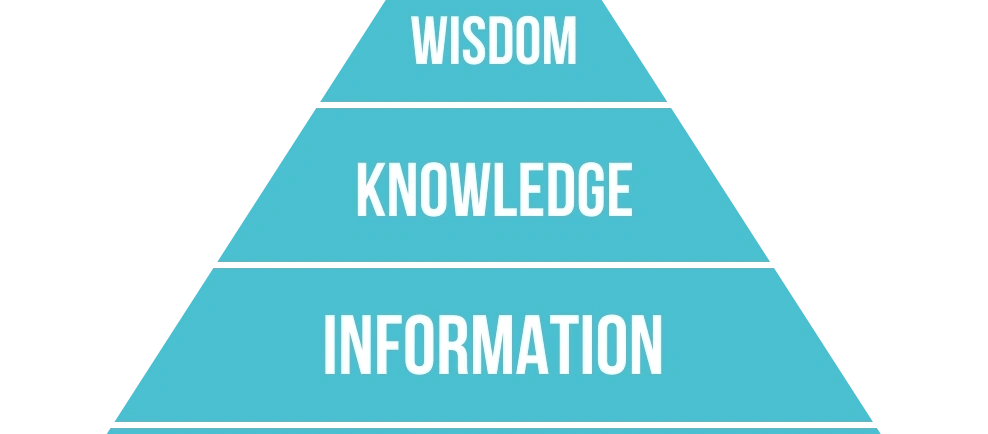Using Data
Footsteps in the Snow
ilker bayar
2/14/20225 min read


I don't know if there is a way to say this without sounding too old but I miss the times when things were much simpler. You know when everyone in the neighbourhood used to know each other and there was a sense of community.
Back then, business owners knew their customers personally. They used to rely on close relationships with their customers. The information they'd get from the customers over a chit-chat during service helped them understand what their customers wanted. An owner would instantly know what upsets customers and possibly fix the issues (a few complaints later, if we are being realistic).
Surely, there are still some small businesses which can perfectly manage their customer base. If you have boutique operations, say you are a small-town farmer, chances are you doing well with your customers since you know them and probably have an ongoing relationship as you have a limited number of customers and a small area of operations.
In this day and age, it would be naïve to expect this from businesses. As firms' have gotten bigger, managing customer relations and interactions became increasingly complicated. Even for SMEs in any big city. Even though businesses can maintain personal relations with their customers thanks to salespeople, it cannot be done on a mass scale.
But with the advent of technology, managing customer relations on a larger scale became relatively convenient. Particularly thanks to data. Companies have been trying to gather data and use it for planning purposes since they couldn't be in touch with each of their customers anymore. And data is invaluable to businesses. The number of potential customers increased and markets have extended overseas, new technologies developed rapidly and the number of channels became ever more diverse. As a result, companies were forced to collect data from all channels and markets.
However, there is a catch with data. All the data coming in high volumes and varieties, and large sets, made processing it more complex. This is what we refer to as Big Data. And it has become a big thing.
It seems that companies loved it. So much so, it has become hype among many firms, a buzzword for marketing professionals of course, and income for those who mine it. And so, relentlessly, firms were gathering all the data there is. They just hoarded and hoarded data as if no one wanted to miss anything that's out there. If there's a hype surrounding some [new] concept, I think it is wise to give it a thought. For a long time, this made me wonder; do we rely too much on data?
According to Statista, a market and consumer data provider, "the global big data market is expected to grow to 103 billion U.S. dollars by 2027, more than double its expected market size in 2018". Surely there is so much potential in data for those who are mining as well as those using it, wisely, to serve customers better. But relying on data blindly bears risks for companies too.
In a previous article, I talked about how having too many choices can make things worse for the decision-making process. Similar to that same idea, having too much data to handle can make it messy for firms to use it meaningfully.
The underlying problem is that data can be too broad so we can't use it for focus or coming to specific conclusions. This is where data and information are separated. Below you can see a chart describing the relationship between data, information, knowledge, and wisdom.
IKW (Information-Knowledge-Wisdom) originated from the play 'The Rock' by T. S. Eliot in 1934 [1]. Later, as data entered our lives through technology, it was added to the pyramid. Not surprisingly, it took its place at the bottom because data is not always significant, especially in larger sats, and needs to be processed to become useful.
In marketing, we always crave for certain consumer data such as demographic or psychographic. These types of data allow a certain kind of intimacy with the masses as we can no longer maintain personal relationships with millions. Even so, it does not grant us any control over them. Data enables us to make more educated guesses in marketing. I think this should be a good idea for the next blog post.
Back to the topic, when we combine the data with our strategies, we end up getting one step closer to success. But it's never a recipe for the ultimate marketing victory. If this was the case, we would be living in utopian digital marketing heaven where every customer's move would be predicted and we wouldn't even lift a finger to design our methods and our products would be sold in a matter of days.
However, following the data is similar to following footsteps in the snow. We might have a lead but they could be misleading us to the same miserable end as the one who left those. If I am to keep using this metaphor, then we must look at other signs and look around in order not to get lost in the wild. Similarly, following the data sets might get you confused about which way you should go. It's better not to rely too much on data and to try turn data sets into information and learn from other sources as well to keep on track.
Another problem with data is that it cannot be as reliable as we think might be. Think about the last time you updated your Facebook profile or you honestly and thoroughly filled in a form online. Most people leave forms incomplete or give inaccurate details when they fill in forms or answer questionnaires.
Of course, there are ways to minimise the adversity born from such inaccuracies. Since marketing professionals depend on the crucial information collected from research, they prefer more reliable methods for marketing plans, product development, competitive pricing, etc. But these reliable methods used to gather the specific data, or rather the information, are quite costly and complicated.
This is why companies rely on big data that is already present and can be easily accessed today. However, this low hanging fruit might disappoint, if it's not used properly. Indeed, most people feel that targeted advertising is hardly relevant and rarely drives consumers to make a purchase. I am sure each one of us has a funny moment of such advertising fails. I keep getting bra advertising despite never having bought one my entire life. This arises from data being raw and unreliable at times.
So should companies stop using data altogether? Surely there are ways to minimise such marketing casualties. Choosing the right methods and sources to gather data and turn it into insightful information is one way to stay on the safe side. A slow but steady way is to collect the data using the company's internal resources and channels rather than relying on externally harnessed big data.
Finally, as I mentioned above, instead of following the footsteps in the snow, digital marketing agencies and business managers need to look around for other variables that could give them more clues about where the company should be headed. That is to say, use your experience and business instincts (knowledge and wisdom) to interpret the data to guide your organisation.
Big data is not necessarily the haze obstructing the view for those sailing the figurative business seas. However, companies need to combine data with other findings and existing knowledge to navigate their business and adapt their digital marketing strategy.
Consultancy
Expertise in fashion and luxury branding.
Training
Agency
hello@branda.website
+447861276382
© 2025. All rights reserved.
